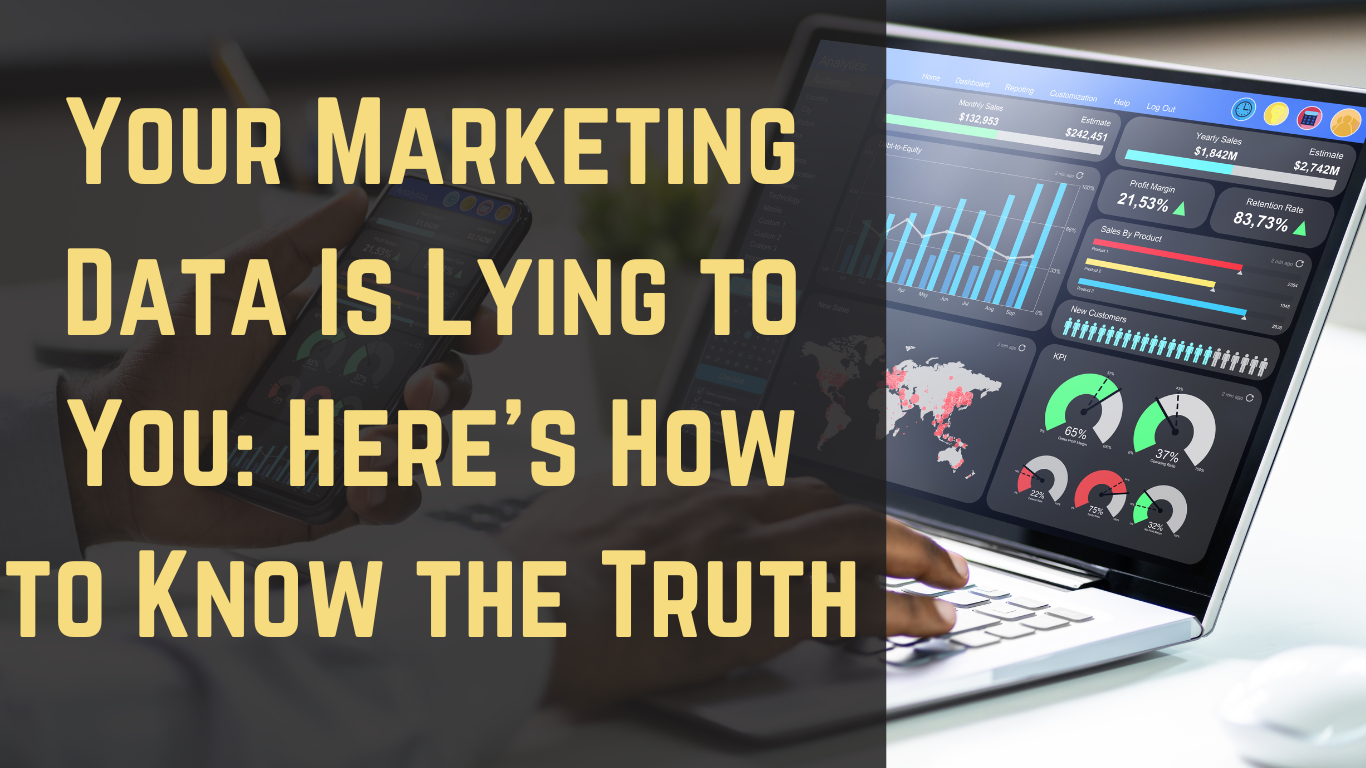Your Marketing Data Is Lying to You: Here’s How to Know the Truth
Published in Business by EA Target ICT
Every day, businesses rely on marketing data to make crucial decisions where to invest, which campaigns to scale, and what strategies to drop. But what if your marketing data is lying to you? Misleading numbers, incomplete tracking, and vanity metrics can paint a false picture of success, leading to costly mistakes.
Many companies struggle with inaccurate data because they focus on the wrong metrics or fail to account for hidden biases. If you’ve ever launched a campaign that seemed successful only to see no real growthyou’ve likely fallen victim to deceptive data.
In this guide, we’ll show you how to spot when your marketing data is lying to you, which metrics truly matter, and how to extract actionable insights for better decision-making.
Why Your Marketing Data Can’t Always Be Trusted
Vanity Metrics vs. Actionable Insights
Many businesses track metrics like “likes,” “page views,” or “downloads” without understanding their real impact. These vanity metrics may look impressive but often don’t translate into revenue or customer loyalty.
For example, a social media post with 10,000 likes might seem successful, but if none of those users visit your website or make a purchase, was it really effective? Instead, focus on conversion rates, customer lifetime value, and return on ad spend (ROAS) metrics that directly impact your bottom line.
Tracking Gaps and Missing Data
Incomplete tracking is another reason your marketing data is lying to you. If your analytics tools aren’t properly set up, you might miss crucial touchpoints in the customer journey.
For instance:
- Are you tracking offline conversions from phone calls or in-store visits?
- Does your attribution model credit the right channels for sales?
- Are bots or fake clicks inflating your ad performance?
Using tools like Google Analytics 4 (GA4) with proper event tracking can help fill these gaps.
Sampling and Small Data Sets
Some analytics platforms use data sampling, especially with large datasets, which can skew results. If you’re making decisions based on a small sample size, you might miss important trends.
Always ensure your data is:
- Statistically significant (enough data points)
- Representative (covers different customer segments)
- Consistent (not affected by temporary spikes)
How to Spot When Your Marketing Data Is Misleading You
Look for Inconsistencies Across Platforms
If your Facebook Ads report shows 50 conversions, but Google Analytics only records 30, there’s a discrepancy. This could mean:
- Tracking errors (pixels not firing correctly)
- Attribution conflicts (different platforms counting conversions differently)
Cross-check data from multiple sources to ensure accuracy.
Compare Trends Over Time
A sudden spike in traffic might seem great—but was it due to a viral post, a bot attack, or a technical error? Always:
- Check for seasonal trends (holidays, sales cycles)
- Investigate unusual changes (did a competitor go offline?)
- Use historical data to spot anomalies
Test Your Assumptions with Experiments
If you suspect your marketing data is lying to you, run controlled tests:
- A/B test different ad creatives to see which truly performs better
- Run a holdout test (pause ads for a group to measure real impact)
- Survey customers to validate if reported behaviour matches reality
The Right Metrics to Focus On Instead of Vanity Data
Not all data is useful. Here’s what you should track instead:
Customer Acquisition Cost (CAC) vs. Lifetime Value (LTV)
- CAC: How much it costs to acquire a new customer
- LTV: How much revenue that customer generates over time
If your CAC is higher than LTV, you’re losing money—no matter how many “leads” you generate.
Return on Ad Spend (ROAS)
ROAS tells you how much revenue you earn for every pound spent on ads. A ROAS of 3:1 means £3 earned for every £1 spent.
Retention and Churn Rates
- High retention = happy customers
- High churn = something’s wrong (even if sales seem strong)
Tools to Help You Get Accurate Marketing Data
To ensure your marketing data isn’t lying to you, use these tools:
- Google Analytics 4 (GA4) – Tracks user behaviour across devices
- Hotjar – Records real user sessions to see how people interact with your site
- Supermetrics – Pulls data from multiple sources into one dashboard
- HubSpot CRM – Tracks leads and sales pipelines accurately
Your marketing data is lying to you if you’re only looking at surface-level numbers. To make smarter decisions: Focus on revenue-driving metrics (not vanity stats), cross-check data across platforms, run experiments to validate assumptions and use reliable tracking tools
By digging deeper, you’ll uncover the truth behind your marketing performance and avoid costly mistakes.
Visit TargetICT.co.uk for more.

